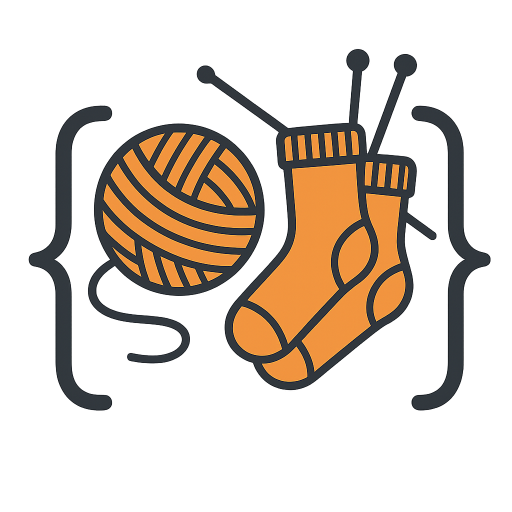
Some people knit sweaters. Others knit code. Both insist their hobby is “relaxing” — right up until they’re found muttering at a pile of tangled yarn or a stack trace at 3 a.m.
As someone who’s dropped both stitches and database tables, I can confirm: knitting and programming are secretly the same hobby, just with different kinds of thread.
1. Patterns Are Just Algorithms in Yarn
Knitting patterns are basically human-readable pseudocode:
“K2, P2, repeat until despair.”
It’s the same logic as:
for i in range(desperation):
knit(2)
purl(2)Both rely on precise syntax. One wrong parenthesis or missed yarn-over, and suddenly your scarf has the same structural integrity as early JavaScript.
And of course, every pattern says “just repeat rows 1–12 until desired length”, which is the same energy as a junior dev being told to “just scale it horizontally.”
2. Debugging: Frogging Your Way to Sanity
In knitting, “frogging” means ripping your work back to fix a mistake. (Because you literally go “rip it, rip it.”)
In programming, that’s called refactoring, reverting, or sometimes “throwing the whole repo away and pretending it never happened.”
Both involve denial, bargaining, and at least one existential sigh.
If you’ve ever thought, “maybe no one will notice that mistake”, congrats — you’ve reached Stage 4 of the debugging grief cycle.
3. Version Control: The Knitter’s Project Bag
Every knitter has at least three half-finished projects living in different tote bags, quietly judging them from the corner.
Programmers call these side projects.
Both groups say things like:
“I’ll finish it one day.”
They won’t.
Also, neither group understands what’s actually inside the bag/repo anymore. Opening it is like running git log on your own shame.
4. Libraries, Frameworks, and Yarn Dependencies
Knitting:
“I just downloaded this new lace pattern library!”
Programming:
“I just installed 47 npm packages to print ‘Hello, World.’”
Both involve dependencies that you don’t fully understand but somehow trust your life with.
The only difference is that knitters’ libraries don’t randomly break when someone unpublishes left-pad.
5. The Compile Moment
Knitting’s version of hitting “run” is binding off.
That’s the glorious instant when you hold up your finished sweater and realize… it’s two sizes too small.
It’s the textile equivalent of a program that works on your machine.
Both situations involve long pauses, quiet swearing, and a vow that next time, you’ll “read the pattern more carefully.” You won’t.
6. Community & Open Source
Knitters have Ravelry, an online pattern-sharing platform with 9 million users.
Programmers have GitHub, an online pattern-sharing platform with 100 million users and roughly the same number of arguments about best practices.
Both communities are powered by generosity, obsession, and strong opinions about tools.
Circular needles vs. straight needles? Vim vs. VS Code? Same energy.
7. The Joy (and Futility) of Creation
At the end of the day, both crafts deliver the same hit of dopamine.
You start with nothing — just a string (of yarn or text) — and end up with something that exists because you made it.
It’s imperfect, a little weird, but undeniably yours.
And when someone asks, “Wow, you made that yourself?”
You smile, nod, and think:
“Yes. And I spent six hours debugging it because I missed a comma.”
Epilogue
So the next time someone tells you knitting is old-fashioned, remind them it’s basically low-level parallel processing. And when someone says programming is too abstract, remind them: it’s just digital crochet with extra parentheses.
Either way, we’re all just trying to get our loops to run without tangling.